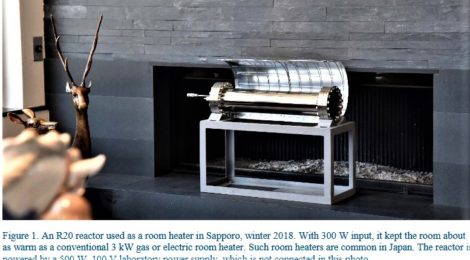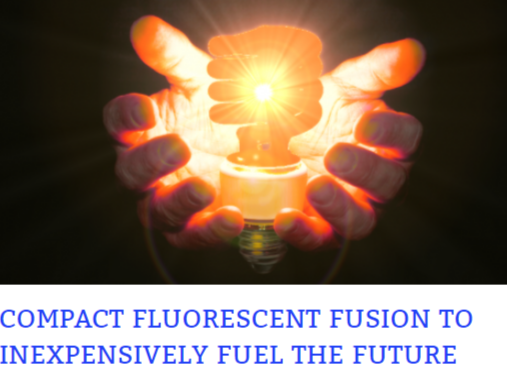
HOT DRY Cold Fusion Protocol From The Land Of The Rising Sun
Tadahiko Mizuno is a Japanese nuclear-chemist known for his decades of work on cold fusion.
His recent multi-kilowatt hot dry cold fusion heater design is pure simplicity
His open source design encourages the world of science to repeat the experiment
Tally Ho, A rising Japanese tide will lift all boats
Mizuno has been working on cold fusion since the earliest days of the 1990’s. I have watched his presentations at many scientific conferences over the years and even read his book on the topic. His life-long career was as a former assistant professor teaching the Atomic Power and Environmental Materials at Hokkaido University. But these days he works on Hot Dry cold fusion.

Dr. Tadahiko Mizuno
He was also a member of Energy Environmental Institute of Engineering at Hokkaido University until 2009. He’s now 74 but still working as hard as ever as a cold fusion scientist at the laboratory bench every day, just like me, albeit I am a bit younger.
The abstract from his most recent paper reads:
We have developed an improved method of producing excess heat with nickel mesh coated with palladium. The new method produces higher power, a larger output to input ratio, and it can be controlled effectively. With 50 W of input, it produces ~250 W of excess heat, and with 300 W it produces ~2 to 3 kW of heat. This paper is a comprehensive description of the apparatus, the reactant, and the method. We hope this paper will allow others to replicate the experiment.
I find Mizuno’s recent work fascinating.
He and I have shared a rather similar path in the exploration of cold fusion for many years. We both have been dogged in our pursuit of many different experimental protocols for going on 30 years. The experiments have always been infectious as they delivered the ‘anomalous’ heat, along with helium, and these days for me at least remarkable gamma rays that accompany the heat though as a tiny fraction thereof.
Both our independent paths began in wet chemistry with water and hydrogen loving metals like palladium. Mizuno most frequently worked in ordinary water systems with nickel, the poor mans cold fusion when compared to using expensive heavy water and palladium. While I have tried ordinary water experiments many times I have never seen cold fusion appear in ‘light water.’ These days I am happy to see Mizuno has come around to see that the light hydrogen reactions, if they are there at all, are far less robust than the heavy hydrogen/ deuterium reactions.
In Mizuno’s new Hot Dry cold fusion work he started with a glow discharge method to deposit tiny amounts of precious palladium on nickel mesh. That process was cumbersome and he tried simply rubbing palladium onto the nickel. This makes sense as anyone skilled in working with palladium knows it is known for being a sticky metal which makes it easy to apply to other metals via rubbing/burnishing.
Apparently using the same glow discharge apparatus for his present thermal reactor Mizuno simply lines the inside circumference of the stainless vacuum cylinder with the palladium rubbed nickel mesh. Sealed and properly cleaned using common vacuum lab practice he introduces a fraction of an atmosphere of deuterium gas. To activate the cold fusion nothing more than heat is applied via a heating element that runs through the centre of the chamber.
Kilowatts of heat output
The retired Japanese professor reports that several kilowatts of heat result from a few hundreds of watts of ohmic heating by the interior electric heating element. His device has been so reliable and practical that he used it to heat his home in cold northern Japan this past winter. The image at the top of this post shows it in his home.

Click to read more about my work demonstrating glow discharge, aka hot dry, cold fusion and why in the not distant future the heating bulb seen here is sure to be a reality.
I am taken by how closely this parallels my work to in HOT DRY cold fusion experiments here in London that are very similar in many of the important facets of producing cold fusion. We both use deuterium, we both use a mix of metals, these are contained in a cylindrical tube that is heated to activate and sustain the cold fusion reactions.
This is a common feature of many successful HOT DRY gas phase cold fusion protocols going back 25 years in the field. These gas phase protocols have been eschewed by many, but not the most knowledgeable in the cold fusion world, to say nothing of the outside world of physics.
One notable HOT DRY cold fusion story is, of course, that of Andrea Rossi who has been all the rage in the colds fusion social media for some years. Rossi works, or he alludes that he works, in light hydrogen, not deuterium though some insiders to his work have reported that he hides cylinders of deuterium gas in his workplace. Rossi also almost entirely avoids the traditional cold fusion meetings though he issues cryptically short comments in social media.
He has raised tens of millions to build and demonstrate his work, however, the results became clouded in controversy when his investors refused to honor commitments to fully fund their agreements with him. Reneging on the payment of some $89 million when his demonstration was complete. The resulting years-long legal battle created a dense smoke screen of controversy that has still not cleared.
Perhaps this new Mizuno protocol which one might easily see as being similar to Rossi’s E-Cats will clear the smoke. I’ve been able to glean from Mizuno’s recent work and his common path some clues on making my own HOT DRY cold fusion scale to similar multi-kilowatt heat output.
 Mizuno’s work is a good stiff kick in the pants for me to get on with the practical scale-up engineering of my own cold fusion heat producing technology. I admit I have recently fallen into the fascinating world of studying, with ever increasing and demanding scientific methods, the mysterious gamma rays that tickle the scientist geek in me. As fascinating as the entirely new to science cold fusion gamma library I have been creating is, those trace gamma rays won’t help save the world.
Mizuno’s work is a good stiff kick in the pants for me to get on with the practical scale-up engineering of my own cold fusion heat producing technology. I admit I have recently fallen into the fascinating world of studying, with ever increasing and demanding scientific methods, the mysterious gamma rays that tickle the scientist geek in me. As fascinating as the entirely new to science cold fusion gamma library I have been creating is, those trace gamma rays won’t help save the world.
Practical kilowatt and greater cold fusion heat will indeed help bring about an early end to the fossil fuel/fool age.
PS. Materials needed to replicate Mizuno’s multi-kilowatt cold fusion are on order and I expect to be one of many who will lend a hand to bring the Japanese cold fusion tide that will lift all boats.
The Mizuno stainless steel reactor setup with Ni/Pd mesh
and low pressure D2
is easily variable.
The Ni Mesh can be burnished with not only Pd
but also other metals
such as Yttrium/ Molybdenum/Silver/
Possibly titanium mesh could be used as well.
Also the effect the radiation mitigation can be looked
at by introducing monazite or zircon sands into the mesh
and looking for reduction in radioactive nuclides.